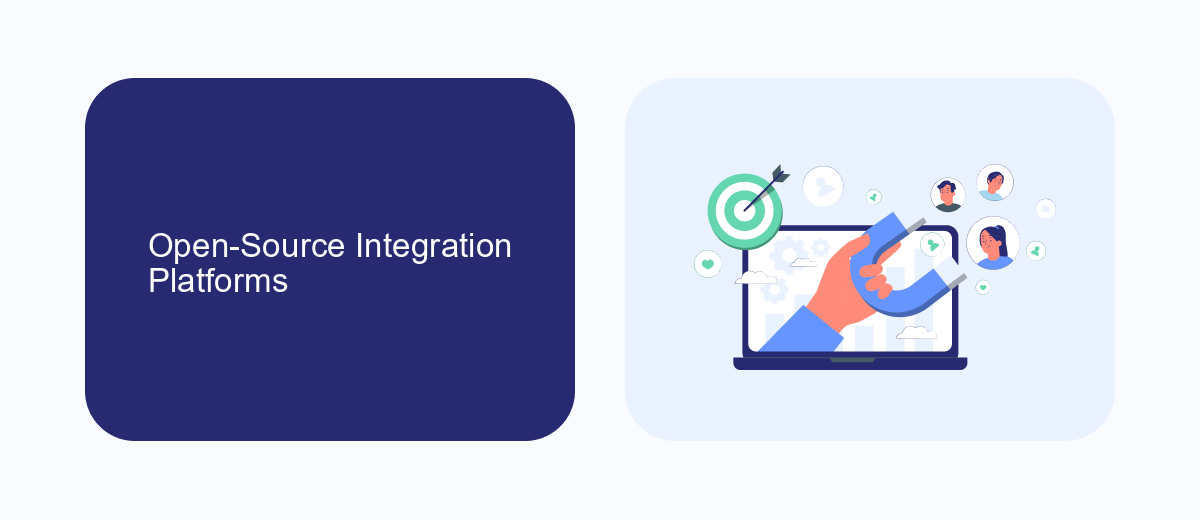As businesses increasingly seek cost-effective and flexible integration solutions, open-source alternatives to MuleSoft have gained significant traction. These alternatives offer robust capabilities for connecting diverse applications and data sources without the hefty price tag. This article explores some of the most promising open-source tools that can serve as viable substitutes for MuleSoft, empowering organizations to streamline their integration processes efficiently.
Introduction
In today's digital landscape, businesses are increasingly relying on integration platforms to connect various applications and streamline their operations. MuleSoft is a popular choice for many enterprises, but it can be costly and complex for smaller organizations. Fortunately, there are several open-source alternatives that offer robust capabilities without the hefty price tag.
- Apache Camel: A versatile integration framework that supports numerous protocols and data formats.
- WSO2 Enterprise Integrator: A comprehensive solution for integrating cloud and on-premises applications.
- Talend Open Studio: An open-source data integration tool with extensive community support.
- SaveMyLeads: An intuitive platform for automating lead data transfer between various services.
These alternatives provide flexible and cost-effective solutions for businesses of all sizes. Whether you need to set up complex workflows or simply automate lead data transfer, these tools can help you achieve seamless integration. SaveMyLeads, for instance, simplifies the process of connecting different marketing and sales platforms, ensuring that your lead data is always up-to-date and accessible.
Open-Source Integration Platforms

Open-source integration platforms offer robust and flexible solutions for businesses looking to streamline their workflows without the high costs associated with proprietary software. These platforms provide a wide range of tools and features that enable seamless data exchange between various applications and systems. By leveraging open-source technology, companies can customize their integration processes to meet specific needs and scale as they grow, ensuring a more efficient and cohesive operational environment.
One notable platform in this space is SaveMyLeads, which simplifies the integration process by automating data transfer between different services. SaveMyLeads allows users to set up complex workflows with minimal technical expertise, making it an ideal choice for businesses of all sizes. Its user-friendly interface and extensive library of pre-built connectors enable quick and easy integrations, reducing the time and effort required to maintain seamless data flows. By utilizing platforms like SaveMyLeads, companies can enhance their operational efficiency and focus on core business activities.
Low-Code Development Tools

Low-code development tools provide a streamlined approach to building applications with minimal hand-coding. These platforms enable developers and non-developers alike to create, deploy, and manage applications quickly and efficiently. They are particularly useful for integrating various services and automating workflows without the need for extensive programming knowledge.
- SaveMyLeads: A powerful tool for automating lead processing and integrating various CRM systems seamlessly.
- OutSystems: Offers a comprehensive low-code environment for rapid application development and deployment.
- Mendix: Provides a collaborative platform for both business and IT to create applications together.
Using low-code development tools like SaveMyLeads can significantly reduce the time and effort required to set up integrations and automate processes. These tools simplify the development lifecycle, allowing businesses to focus on innovation and efficiency rather than getting bogged down by technical complexities.
Microservice Architectures

Microservice architectures have revolutionized the way we build and manage applications by breaking down monolithic systems into smaller, more manageable services. These independent services can be developed, deployed, and scaled independently, allowing for greater flexibility and efficiency in development processes.
One of the key advantages of microservices is the ability to use different technologies and programming languages for different services, depending on the specific requirements of each. This polyglot approach enables teams to choose the best tools for the job, leading to improved performance and maintainability.
- Improved scalability and flexibility
- Enhanced fault isolation
- Faster deployment cycles
- Better alignment with DevOps practices
For businesses looking to streamline their integration processes within a microservices framework, tools like SaveMyLeads can be invaluable. SaveMyLeads automates the transfer of data between various services and applications, ensuring seamless communication and reducing the need for manual intervention. By leveraging such tools, organizations can further enhance the efficiency and reliability of their microservice architectures.
Cloud-Native Solutions
Cloud-native solutions offer a modern approach to integration, leveraging the scalability and flexibility of cloud platforms. These solutions are designed to run in distributed environments, ensuring high availability and resilience. They can be deployed on various cloud providers such as AWS, Google Cloud, or Azure, making them highly adaptable to different business needs. By utilizing containerization and microservices architecture, cloud-native solutions provide seamless integration capabilities, allowing businesses to quickly adapt to changing requirements and scale their operations efficiently.
One notable example of a cloud-native integration service is SaveMyLeads. This platform simplifies the process of connecting various applications and automating workflows without requiring extensive coding knowledge. With SaveMyLeads, businesses can easily set up integrations between their CRM, marketing tools, and other essential software, ensuring that data flows smoothly across systems. As a result, companies can enhance their operational efficiency and focus on core activities, knowing that their integration needs are handled reliably and effectively by a cloud-native solution.


FAQ
What are some open-source alternatives to MuleSoft?
How do open-source integration tools compare to MuleSoft in terms of cost?
Are open-source integration tools as reliable as MuleSoft?
What are the main challenges when using open-source integration tools?
Is there a service that can help with the automation and integration setup for open-source tools?
Use the SaveMyLeads service to improve the speed and quality of your Facebook lead processing. You do not need to regularly check the advertising account and download the CSV file. Get leads quickly and in a convenient format. Using the SML online connector, you can set up automatic transfer of leads from Facebook to various services: CRM systems, instant messengers, task managers, email services, etc. Automate the data transfer process, save time and improve customer service.
